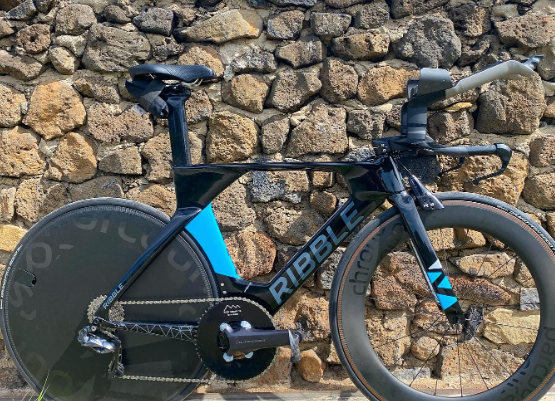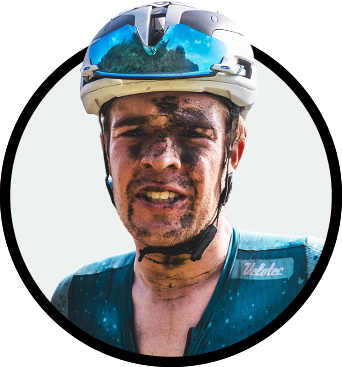'Marginal gains' is a term that we’ve got cycling's Team GB and Team Sky mastermind, Dave Brailsford, to thank for. It effectively relates to searching for a tiny margin of improvement in everything you do.
The whole principle came from the idea that if you broke down everything you could think of that goes into riding a bike, and then improve it by one percent, you will get a significant increase when you put them all together.
It’s a term that’s become heavily overused, but the principle still holds true and I’ve found myself testing out various marginal gains in all areas of my approach to cycling. Here are some that I’ve tried out, with some yielding improvements and others that are best forgotten…
1. Aerodynamics
The world of aero has taken off in the past decade. The cycling world moved from being obsessed about lightweight bikes to focusing on aerodynamics. The obsession is warranted. Aside from training to improve physiologically, I believe that aerodynamics are the single biggest gain that a rider can make.
From skinsuits and socks, to wind tunnels, funky helmets and fairings; I like to think that I have a pretty dialled position, and that I’m on the ball with equipment.
Perhaps my funniest marginal gain was at the 2023 National 10 race. My crank arm has a square edge, and I wanted to smooth airflow. I have no idea if it’s actually aero-beneficial, but it’d certainly look faster. The normal route for this is to buy a pre-made aero cover, or to use gaffer tape. I used blu tac. It was a marginal gain that got a few smiles, and I did revert back to gaffer tape for my next event.

2. Clothing
Clothing choice is incredibly important when racing. The more you can race in an aerodynamic set-up the better. Whether it be the already mentioned aerosocks, or a slightly tighter fitting jersey and shorts combination, the wattage gains you can get are significant.
I spent an afternoon in the Silverstone Windtunnel and the findings were noteworthy to say the least. Changing skinsuit was worth as much as ten watts, with the new aerodynamic undervests being worth up to 25 watts if correctly used with the right suit!
3. Pre-race nutrition
Calling carbohydrates a marginal gain is a little bit of an injustice. They are your fuel. It’s no different to putting petrol or diesel in your car.
For a long time, I tried to find a breakfast that was both tasty and high enough in calories for long and hard races. From porridge to pancakes, I tried anything and everything that was high in carb. I struggled to find something that worked, and I’d either go in under-fueled or suffer a hypoglycaemic reaction.
Now, my tastebuds are not proud of this one, but it’s done solely with performance in mind. Before big races, I simply eat a big bowl of white rice, with either jam or pesto depending on the time of day. It’s boring, and it’s tasteless. But, it’s a highly effective meal in terms of grams of carbohydrate. Being an athlete isn’t always fun...
4. Carrying nutrition
Having things easily accessible makes a difference, whether it means unwrapping a chew in advance, or having a specific pocket for the caffeine gels. The easier the process is, the more likely you are to fuel correctly.
Something I spoke about in my ‘8 things I learned in my first year of gravel’ article was how to store nutrition. I never put carbohydrate mix into the bladder that I carry on my back, so I can focus solely on hydration through my bladder.
I also unwrap my PF 30 Chews before the race and place them in a small plastic bag in a top tube bag. Having a top-tube bag makes no difference to how the bike handles but it does lighten your pockets a bit. It also allows you to split up eating chews since each piece is 15g of carb.
Again, it makes your life that little bit easier as your pockets can simply be full of gels!
5. Caffeine
I’m a caffeine addict and a coffee snob. Not only does coffee taste great, but it’s a performance-enhancer too. Although, perhaps controversially I do NOT drink coffee on race day.
Instead, I’ll stick to caffeine gels or chews that have a controlled amount of caffeine. The problem with coffee is that it’s difficult to know exactly (well, without very geeky and expensive tests) how much caffeine is in your cup.
Maybe that means you don’t quite hit the caffeine dosage that you need to improve performance. Or, maybe you go past the optimum number and it starts to cause problems. I’ve done the latter, and it’s not pretty.
6. Planning
Have you ever heard of the 7 P’s?
Proper Planning and Preparation Prevents P*ss Poor Performance.
Investing time in yourself to come up with a plan of action before an event will save you so much nervous energy that you will be thanking yourself later.
This might mean having a nutrition plan nailed and written down so there’s no thinking on race day, or scouting out the closest bike shop near your event just in case something goes wrong.
There’s no such thing as over preparing. The more you do in advance, the less you’ll have to worry. The symptoms of stress are: muscle tension, anxiety, fatigue, sleep disruption, impaired immunity, amongst others. And clearly, none of these are symptoms you want on race day!
You put in hours of training, and make countless sacrifices. Going the extra mile and putting a touch more work in will pay dividends.
